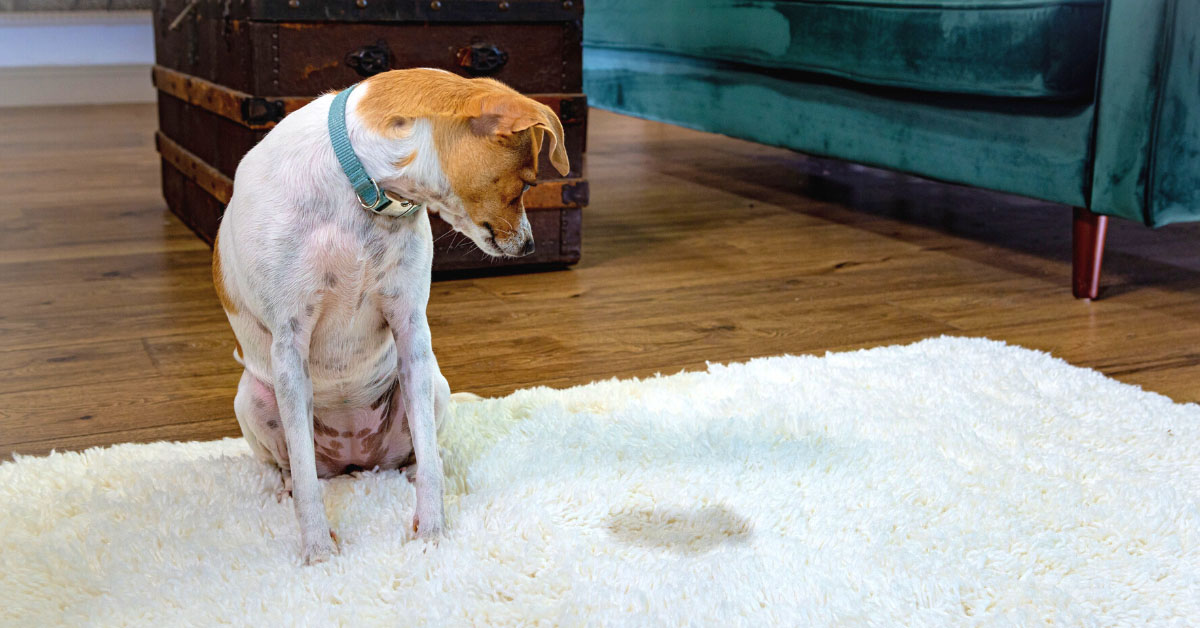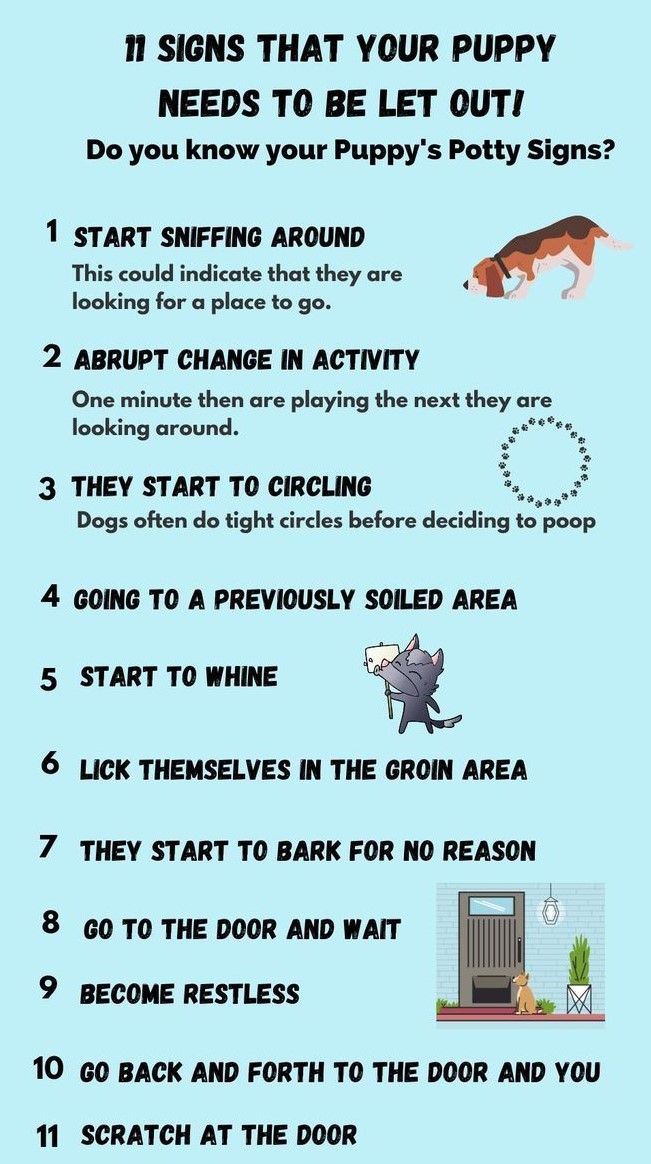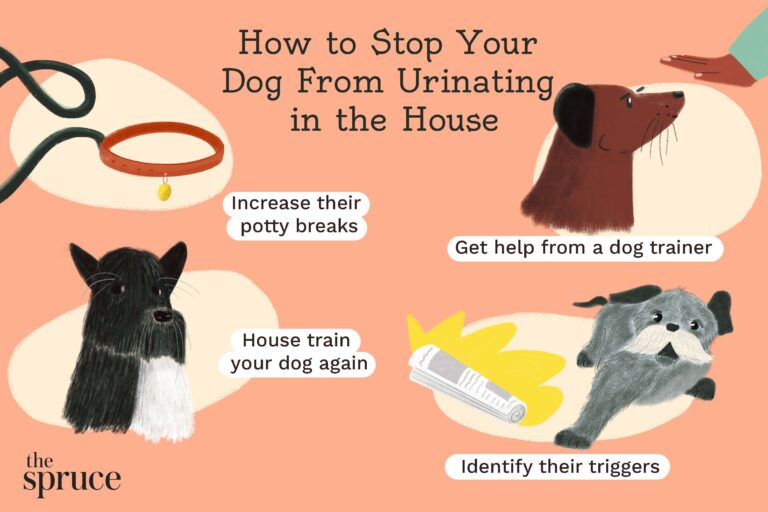To break a dog from peeing in the house, consistency in potty training and positive reinforcement are key. Potty accidents can be frustrating for dog owners, but it’s important to remember that dogs don’t naturally understand where they should and shouldn’t do their business.
With some patience, consistent training, and positive reinforcement techniques, you can effectively break your dog’s habit of peeing in the house. We will explore a variety of methods to help guide your furry friend towards proper potty etiquette. By following these steps, you can create a harmonious household where accidents become a thing of the past.
So let’s dive in and discover how to train your dog to stop peeing in the house.

Credit: kristenlevine.com
Understanding The Reasons Behind The Problem
Understanding the reasons why your dog is peeing in the house is crucial to breaking this habit. By identifying the underlying causes, you can develop effective strategies to address the problem and help your dog learn proper house training.
Understanding the Reasons Behind the ProblemWhen it comes to a dog peeing in the house, it’s important to understand the underlying reasons behind this behavior. Dogs typically urinate in the house due to a combination of common reasons and specific triggers. By identifying and addressing these factors, you can effectively break your dog from this habit and create a clean and stress-free living environment for both you and your furry friend.Common Reasons Why Dogs Pee in the HouseThere are several common reasons why dogs may be inclined to pee in the house. These reasons include:1. Lack of proper house training: This is often the most common cause of indoor urination for dogs. If a dog has not been effectively trained on where it is appropriate to relieve itself, it may resort to peeing in the house.2. Separation anxiety: Dogs who experience separation anxiety may urinate in the house as a response to the stress and anxiety they feel when their owners are away.3. Marking territory: Dogs have a natural instinct to mark their territory by urinating. If a dog feels the need to assert dominance or mark its territory, it may pee in the house.4. Medical issues: Occasionally, dogs may urinate indoors due to underlying medical issues such as urinary tract infections or bladder problems. It’s important to rule out any potential health concerns before addressing the behavior.Identifying Specific Triggers for Your DogIn addition to these common reasons, it’s crucial to identify the specific triggers that may cause your dog to pee in the house. Each dog is unique and may have different triggers that lead to this behavior. Here are a few steps to help you identify those triggers:1. Observe patterns: Pay attention to when your dog tends to urinate indoors. Is it after specific events or activities? Keeping track of these patterns can provide valuable insight into the triggers. 2. Look for anxiety cues: Dogs may exhibit certain signs of anxiety before urinating indoors, such as pacing, panting excessively, or displaying other signs of distress. By recognizing these cues, you can identify the triggers that cause your dog anxiety.3. Monitor the environment: Take note of any changes in your dog’s surroundings or routine that may coincide with indoor urination. This could include new additions to the household, changes in living arrangements, or disruptions to your dog’s daily routine.By understanding the reasons behind your dog’s indoor urination and identifying specific triggers, you can take targeted steps to address this behavior. In the next section, we will explore effective strategies for breaking your dog from peeing in the house. Stay tuned!
Credit: suburban-k9.com
Establishing Proper Training And Routine
When it comes to breaking a dog from peeing in the house, establishing a consistent training routine is vital. Dogs thrive on structure, so having set schedules for feeding and bathroom breaks helps them understand when and where they should eliminate. Consistency is key here, so it’s crucial to feed your dog at the same times each day and take them out for bathroom breaks on a regular schedule.
Consistency Is Key
Following a consistent schedule for feeding and bathroom breaks is crucial for effectively breaking a dog from peeing in the house.
Feeding schedule
Determine the appropriate amount of food for your dog’s size and breed, and divide it into two or three meals per day. Choose designated feeding times and stick to them. This not only helps regulate their digestion but also makes it easier to predict when they will need to eliminate.
Bathroom breaks
Take your dog out for bathroom breaks at specific intervals throughout the day. This may vary depending on their age, size, and bladder control. Puppies, for example, may need to go out more frequently. Establishing a routine by taking them out after meals, naps, and playtime can help prevent accidents in the house.
In addition to a consistent schedule, creating a designated bathroom area for your dog is another effective strategy to break them from peeing in the house. By providing them with a specific spot to relieve themselves, you help establish a clear routine and eliminate confusion.
Establishing A Routine
Creating a designated bathroom area involves consistently taking your dog to the same location each time they need to eliminate. This teaches them that this specific spot is where they should go to do their business.
Selecting the area
Choose an easily accessible outdoor location that is conveniently located for both you and your dog. Look for a spot that is away from high-traffic areas of your yard and preferably has a natural element, such as grass or dirt. This mimics the texture they may have become accustomed to when eliminating indoors.
Using scent markers
To further reinforce the designated bathroom area, you can use scent markers. These can be natural (such as leaving a small piece of your dog’s urine-soaked pad or a smear of their feces) or commercial products designed to attract dogs to specific spots. These markers can help signal to your dog that this is the right place to eliminate.
Positive reinforcement is a highly effective method for training dogs, including breaking them from peeing in the house. By rewarding desired behavior, you reinforce the idea that eliminating in the designated bathroom area is the right thing to do.
The Power Of Rewards
Using rewards such as treats or verbal praise when your dog eliminates in the designated bathroom area creates a positive association. This encourages them to repeat the behavior in the future.
Immediate rewards
Timing is crucial when it comes to rewarding your dog. Make sure to praise and give a treat immediately after they finish eliminating in the designated area. This helps them make the connection between the behavior and the reward.
Consistency is key
Consistently rewarding your dog for eliminating in the designated area reinforces their understanding and motivation to continue doing so. Over time, the need for external rewards may diminish as the behavior becomes ingrained.
Addressing Medical And Behavioral Issues
Addressing medical and behavioral issues is essential when trying to break a dog from peeing in the house. By identifying and treating any underlying medical conditions, implementing consistent training techniques, and providing proper mental and physical stimulation, you can help your dog overcome this behavior.
Addressing Medical and Behavioral IssuesDealing with a dog that constantly pees in the house can be a frustrating challenge for any pet owner. However, it’s important to understand that there could be underlying medical or behavioral issues contributing to this behavior. By addressing these issues, you can effectively break your dog from peeing in the house and create a clean and stress-free living environment for both you and your furry friend.Consulting With A Veterinarian
If your dog is consistently having accidents in the house, it’s crucial to first rule out any medical conditions that may be causing this behavior. Schedule an appointment with your trusted veterinarian to perform a thorough examination. The vet can help determine if there are any underlying health issues such as urinary tract infections, bladder stones, or diabetes. Treating these conditions will not only improve your dog’s health but also improve their control over urination.Managing Anxiety And Stress
Anxiety and stress can lead to inappropriate urination in dogs. Identifying and addressing the sources of stress can greatly help in breaking this habit. Create a calm and comfortable environment for your dog by providing a designated area with their own bed, toys, and blankets. Consider using pheromone diffusers or calming music to help relax your dog. Regular exercise and mental stimulation are essential for reducing anxiety and preventing boredom, which can also contribute to house soiling.Dealing With Marking Behavior
Marking behavior, where a dog intentionally marks their territory by urinating, can be a challenging issue to address. One way to discourage marking is through neutering or spaying your dog. This can help reduce their urge to mark. Another effective technique is positive reinforcement training. Reward your dog with treats, praise, and gentle petting each time they successfully eliminate outside. Consistency and patience are key when training your dog to break the habit of marking.In summary, addressing both medical and behavioral issues is crucial in breaking a dog from peeing in the house. Consulting with a veterinarian to rule out any underlying health conditions is the first step. Managing anxiety and stress through creating a calm environment and providing regular exercise can also help. Additionally, dealing with marking behavior through neutering/spaying and positive reinforcement training can be effective strategies. By addressing these factors, you can help your dog break the habit of soiling the house and create a happier and healthier living space for both of you.
Credit: www.amazon.com
Frequently Asked Questions For How To Break A Dog From Peeing In The House
How Do I Discipline My Dog For Peeing In The House?
To discipline your dog for peeing in the house:1. Catch your dog in the act. 2. Interrupt the behavior with a firm “no” or clap your hands. 3. Immediately take your dog outside to finish peeing. 4. Clean the accident thoroughly, using an enzyme cleaner.
5. Consistently reinforce positive behavior with rewards and praise.
Can I Train My Dog To Stop Peeing In The House?
Yes, you can train your dog to stop peeing in the house. Consistency is key. Use positive reinforcement, take them outside frequently, establish a schedule, and clean up accidents properly. Gradually increase their freedom in the house as they learn.
What Repels Dogs From Peeing In The House?
To repel dogs from peeing in the house, you can use specific scents like citrus or vinegar. These smells are unpleasant to dogs and can discourage them from peeing inside. Cleaning accidents with an enzymatic cleaner also helps remove the scent, making dogs less likely to repeat their actions.
How Do I Stop My Dog From Peeing In The House When Left Alone?
To stop your dog from peeing in the house when left alone, try these steps: establish a routine for potty breaks, provide ample exercise, crate train your dog, limit water intake before leaving, and use positive reinforcement for good behavior.
Conclusion
To wrap things up, breaking a dog from peeing in the house requires patience, consistency, and positive reinforcement. By understanding the root cause, establishing a routine, providing proper training, and creating a favorable environment, you can effectively address this issue.
Remember, it’s essential to remain calm and avoid punishment, as this can confuse and stress out your furry friend. With dedication and understanding, you’ll be able to teach your dog proper bathroom habits and create a cleaner, happier home for everyone involved.



